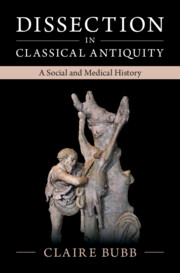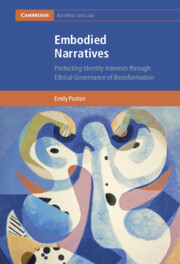48 results
2 - The History of Sexuality and Anthropology
-
-
- Book:
- The Cambridge World History of Sexualities
- Published online:
- 26 April 2024
- Print publication:
- 16 May 2024, pp 23-44
-
- Chapter
- Export citation
18 - Sexuality and Emotion
-
-
- Book:
- The Cambridge World History of Sexualities
- Published online:
- 26 April 2024
- Print publication:
- 16 May 2024, pp 388-409
-
- Chapter
- Export citation
The Suffering Subject: Colonial Flogging in Northern Nigeria and a Humanitarian Public, 1904–1933
-
- Journal:
- Comparative Studies in Society and History / Volume 66 / Issue 2 / April 2024
- Published online by Cambridge University Press:
- 11 January 2024, pp. 319-341
-
- Article
-
- You have access
- Open access
- HTML
- Export citation
Chapter 11 - A Voyage to Brobdingnag
- from Part III - Reading Gulliver’s Travels
-
-
- Book:
- The Cambridge Companion to <i>Gulliver's Travels</i>
- Published online:
- 05 October 2023
- Print publication:
- 19 October 2023, pp 137-149
-
- Chapter
- Export citation
Chapter 3 - Bodies and Gender
- from Part I - Contexts
-
-
- Book:
- The Cambridge Companion to <i>Gulliver's Travels</i>
- Published online:
- 05 October 2023
- Print publication:
- 19 October 2023, pp 34-45
-
- Chapter
- Export citation
8 - Pattern Books II
-
- Book:
- How to Make a Mao Suit
- Published online:
- 20 July 2023
- Print publication:
- 03 August 2023, pp 225-254
-
- Chapter
- Export citation
4 - The Racialisation of British Women during the Long Nineteenth Century
-
-
- Book:
- The Cambridge Handbook of Race and Surveillance
- Published online:
- 23 February 2023
- Print publication:
- 02 March 2023, pp 57-75
-
- Chapter
- Export citation
Chapter 1 - Bodies
- from Part I - Dramatic Action
-
- Book:
- Entertaining Uncertainty in the Early Modern Theater
- Published online:
- 02 February 2023
- Print publication:
- 09 February 2023, pp 35-70
-
- Chapter
- Export citation
Chapter 2 - Parchment Bodies: Race and Writing Materials
-
- Book:
- William Faulkner and the Materials of Writing
- Published online:
- 24 May 2023
- Print publication:
- 05 January 2023, pp 53-75
-
- Chapter
- Export citation

Dissection in Classical Antiquity
- A Social and Medical History
-
- Published online:
- 18 November 2022
- Print publication:
- 08 December 2022
1 - The Science of Death
-
- Book:
- The Science of Proof
- Published online:
- 25 August 2022
- Print publication:
- 01 September 2022, pp 12-44
-
- Chapter
- Export citation
7 - Killing the Individual Human Being via Drones
-
- Book:
- The Humanisation of Global Politics
- Published online:
- 25 August 2022
- Print publication:
- 01 September 2022, pp 160-202
-
- Chapter
- Export citation
1 - Embodied Anxieties
-
- Book:
- Hierarchies at Home
- Published online:
- 18 August 2022
- Print publication:
- 25 August 2022, pp 20-48
-
- Chapter
- Export citation

Embodied Narratives
- Protecting Identity Interests through Ethical Governance of Bioinformation
-
- Published online:
- 02 July 2022
- Print publication:
- 14 July 2022
-
- Book
-
- You have access
- Open access
- Export citation
2 - Unstable Instruments
-
- Book:
- Science on the Roof of the World
- Published online:
- 28 April 2022
- Print publication:
- 12 May 2022, pp 64-95
-
- Chapter
- Export citation
3 - Suffering Bodies
-
- Book:
- Science on the Roof of the World
- Published online:
- 28 April 2022
- Print publication:
- 12 May 2022, pp 96-129
-
- Chapter
- Export citation
Chapter 2 - ‘Thou Look’st Pale’: Narrating Blanching and Blushing on the Early Modern Stage
- from Part I - Players
-
-
- Book:
- Playing and Playgoing in Early Modern England
- Published online:
- 10 March 2022
- Print publication:
- 17 March 2022, pp 37-56
-
- Chapter
- Export citation
13 - Integrating the Biological and the Technological
-
-
- Book:
- Law and Legacy in Medical Jurisprudence
- Published online:
- 23 December 2021
- Print publication:
- 10 March 2022, pp 279-306
-
- Chapter
- Export citation
1 - An Overwhelming Loss
-
- Book:
- The Broken Years
- Published online:
- 10 February 2022
- Print publication:
- 17 February 2022, pp 17-54
-
- Chapter
- Export citation
Chapter 5 - ‘Because this box we know’
-
- Book:
- Boxes and Books in Early Modern England
- Published online:
- 25 August 2021
- Print publication:
- 19 August 2021, pp 191-218
-
- Chapter
- Export citation



